Disclosure: This article contains affiliate links. We may earn a commission from purchases at no extra cost to you, which helps our travel content.
The morning light in Santiago has a quality I've never encountered elsewhere – a golden-amber glow that seems to dance between the Andean peaks and colonial architecture, creating the perfect canvas for photography enthusiasts. As someone who typically documents wildlife in their natural habitats, turning my lens toward this vibrant South American capital offered a refreshing change of perspective. During my recent autumn weekend escape from Norfolk's veterinary clinic chaos, I discovered that Santiago isn't just a gateway to Chile's spectacular wilderness – it's a photographic playground where cultural heritage, modern urban design, and breathtaking natural backdrops converge. Whether you're wielding a professional camera or simply your smartphone, these ten locations will fill your memory cards with images that capture Santiago's multifaceted soul. Pack light, charge your batteries, and join me on this visual journey through a city that deserves far more attention in travel photography circles.
Cerro San Cristóbal: The Classic Santiago Panorama
If there's one vantage point that should top every photographer's Santiago itinerary, it's Cerro San Cristóbal. At 300 meters above the city, this hill offers what I consider the definitive Santiago vista – a sweeping panorama where metropolitan sprawl meets the majestic Andean backdrop.
I arrived via the historic funicular railway (a photographic subject in itself) about an hour before sunset, my camera backpack loaded with gear. The timing was deliberate; as the afternoon light softens, the city below transforms into a mosaic of warm tones while the snow-capped mountains take on a pinkish hue locals call alpenglow.
The 14-meter statue of the Virgin Mary atop the hill serves as both a spiritual landmark and a compelling foreground element. For composition enthusiasts, try framing your panorama with her silhouette to one side, creating depth and scale. While most visitors cluster at the main viewpoint, I found walking about 200 meters along the northern path revealed a less crowded angle with the financial district's glass towers reflecting golden hour light.
During my visit, a local photographer shared that morning fog sometimes creates a mystical atmosphere in autumn months, with the city's tallest buildings emerging from the mist – worth an early wake-up call if you're staying nearby. The ecological diversity here surprised me too; as a veterinarian, I couldn't help noticing several endemic bird species that make excellent wildlife photography subjects against the urban backdrop.
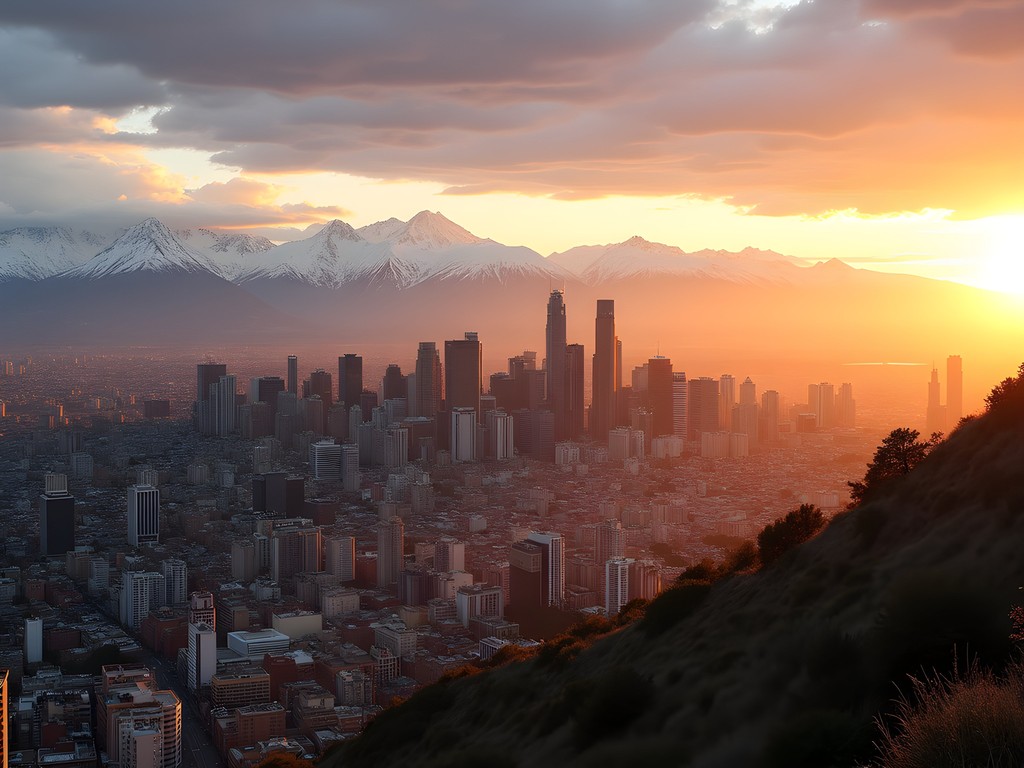
💡 Pro Tips
- Visit 1-2 hours before sunset for the best lighting on the city and mountains
- Bring a polarizing filter to reduce haze and enhance the Andean backdrop
- The funicular can have long lines on weekends – consider hiking up for morning shots and riding down after
Plaza de Armas: Colonial Heritage in the Historic Heart
The historic soul of Santiago beats strongest in Plaza de Armas, where the city's colonial past remains etched in architecture spanning four centuries. As a photographer who appreciates cultural narratives, I found this central square offers endless compositional possibilities that capture both Chile's history and its contemporary rhythm.
The Metropolitan Cathedral's neoclassical façade demands attention, especially in early morning light when the stone glows a warm honey color. I positioned myself at the northwest corner of the plaza around 8:30 AM, when the morning light illuminates the cathedral's intricate details while the plaza remains relatively empty of crowds. My wide-angle lens proved invaluable here, allowing me to capture both the architectural grandeur and the human element as locals crossed the square on their morning commutes.
The Central Post Office Building and Historical Museum create a stunning architectural ensemble that frames street performers and local artisans selling their crafts. These spontaneous human moments against historic backdrops tell Santiago's story more eloquently than any posed shot could. I spent nearly two hours just observing the interplay of light across the colonial buildings as the sun climbed higher.
For a unique perspective, I discovered the café on the second floor of the National Historical Museum offers window seating with elevated views across the plaza – perfect for capturing the geometric patterns of the square's layout while enjoying a cortado (Chilean espresso with a splash of milk). The contrast between centuries-old palm trees and the modern metropolitan bustle creates a visual tension that speaks to Santiago's evolution through time.

💡 Pro Tips
- Visit early morning (before 9 AM) for best lighting and fewer tourists
- Look for reflections in the historic buildings' windows for creative compositions
- The second floor of the National Historical Museum offers unique elevated views of the plaza
Sky Costanera: Urban Heights and Mountain Majesty
For photographers seeking the ultimate urban landscape shot, Sky Costanera offers a perspective that still leaves me breathless. Perched 300 meters above ground at the summit of Latin America's tallest building, this 360-degree observation deck presents Santiago as a vast urban tapestry with the Andes serving as nature's grandest backdrop.
As someone who typically photographs wildlife in their natural habitats, I found myself equally captivated by this human ecosystem sprawling below. The glass-enclosed observation deck eliminates wind concerns while still allowing unobstructed views—perfect for long-exposure cityscape photography. I arrived about 30 minutes before sunset and stayed through blue hour, watching as the city transformed from daytime bustle to a constellation of lights.
What makes Sky Costanera particularly special for photographers is the juxtaposition of ultra-modern urban development against the ancient Andean range. On clear autumn days (which I was fortunate to experience), the mountains appear so close you could almost touch them, creating a dramatic scale contrast with the miniaturized city below.
For the technically minded photographer, I'd recommend bringing a versatile zoom like my trusty travel zoom lens which allowed me to capture both sweeping cityscapes and compressed telephoto shots of distant neighborhoods with the mountains looming behind them. The staff are photographer-friendly and permit tripods during weekdays (though weekend policies may vary).
A fascinating discovery was how the observation deck reveals Santiago's distinct neighborhood divisions and the city's relationship with its geography. From this height, you can clearly see how the Mapocho River winds through the urban landscape and how the city's development has been shaped by natural boundaries—a fascinating study in urban ecology that appealed to my scientific background.

💡 Pro Tips
- Visit during weekdays when tripods are permitted for night photography
- Arrive 30 minutes before sunset and stay through blue hour for the most dramatic lighting transitions
- Use the interactive touchscreens to identify specific neighborhoods and mountains for more informed compositions
Mercado Central: Capturing Culinary Culture
Few locations offer such rich sensory photography opportunities as Santiago's historic Mercado Central. This 19th-century wrought-iron marvel houses a vibrant seafood market that connects photographers to Chile's 4,270 kilometers of coastline through its daily catch displays and bustling food stalls.
As someone who's photographed markets from Manila to Maritimes, I've developed an eye for authentic cultural moments, and Mercado Central delivers these in abundance. Arriving around 10 AM on a Friday, I found the perfect balance between active commerce and navigable pathways. The market's soaring iron framework creates dramatic light patterns that stream down onto colorful seafood displays – a natural spotlight system that photographers couldn't design better if they tried.
The central hall houses restaurants serving Chile's famous seafood, but for photography, I found the peripheral stalls more compelling. Here, fishmongers arrange their morning catches with an artistry that speaks to generations of tradition. The vibrant red of freshly caught southern king crab against weathered wooden counters creates striking color contrasts that pop in photographs.
My approach was to start with environmental wide shots capturing the market's architectural grandeur, then gradually work closer with a prime lens for intimate portraits and food details. This lens's wide aperture proved perfect for isolating subjects against the bustling background while maintaining sharpness in lower light conditions.
A note on etiquette: always ask permission before photographing vendors closely. I found that purchasing small items and showing genuine interest in their work opened doors to more authentic photography opportunities. My background working with fishing communities during veterinary research trips helped me connect with several vendors who proudly displayed their most impressive specimens for my camera.
Don't miss the exterior architecture either – the wrought-iron façade creates beautiful framing opportunities, especially when photographed from the small plaza across the street in late afternoon light.
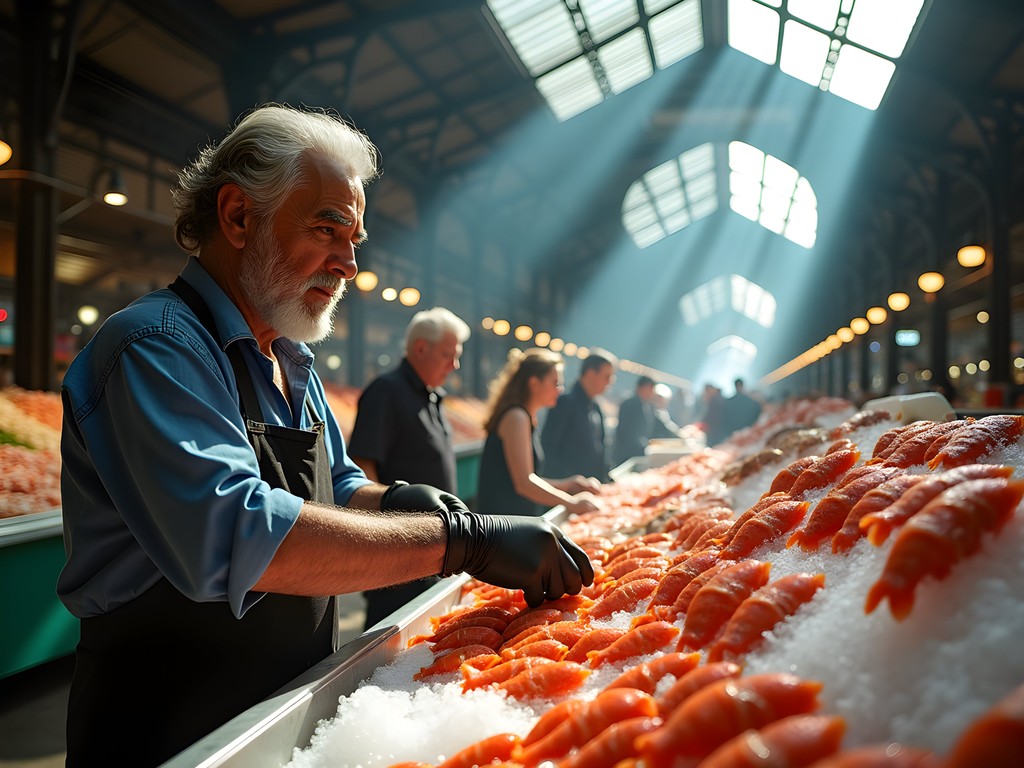
💡 Pro Tips
- Visit between 10 AM-noon when light streams through the ceiling but before the lunch rush
- Purchase small items from vendors before asking for portraits – respect builds better photography opportunities
- Look for reflections in the metal surfaces and water for creative compositions
Barrio Lastarria: Street Photography in Santiago's Artistic Soul
Barrio Lastarria captured my heart from the moment I turned onto its cobblestone streets. This bohemian neighborhood represents Santiago's creative pulse, where historic architecture houses contemporary art galleries, boutique cafés, and street performers – creating a photographer's playground of contrasts and colors.
The neighborhood's pedestrian-friendly layout makes it ideal for street photography, with its narrow passages opening unexpectedly into charming plazas. I visited on a Saturday afternoon when the weekend art market was in full swing, filling the streets with local artisans displaying handcrafted jewelry, textiles, and paintings. These temporary installations provided ever-changing foreground elements against the district's preserved 19th-century façades.
What struck me most was how the neighborhood's warm-toned buildings create a natural reflector effect, bathing the streets in soft, flattering light even during midday hours when harsh lighting typically challenges photographers elsewhere. The historic buildings' yellow and terracotta hues infuse images with a warmth that captures Lastarria's inviting atmosphere.
For the technically minded, I found switching to my street photography lens ideal for this environment – fast enough for changing light conditions while offering a natural perspective that doesn't distort the architectural elements. The lens's weather resistance proved valuable when an unexpected autumn shower created glistening cobblestones that reflected the colorful umbrellas above.
Don't miss the street performers who gather near Plaza del Mulato Gil – their interactions with audiences create authentic moments of cultural connection. I spent nearly an hour photographing a traditional Chilean music group, documenting both their performance and the diverse audience reactions, from elderly couples spontaneously dancing to young children experiencing these traditions for perhaps the first time.
As evening approached, the neighborhood's numerous cafés spilled warm light onto the streets, creating perfect conditions for low-light environmental portraits. The contrast between historic exteriors and contemporary interior designs offers fascinating glimpses into Santiago's evolving identity.
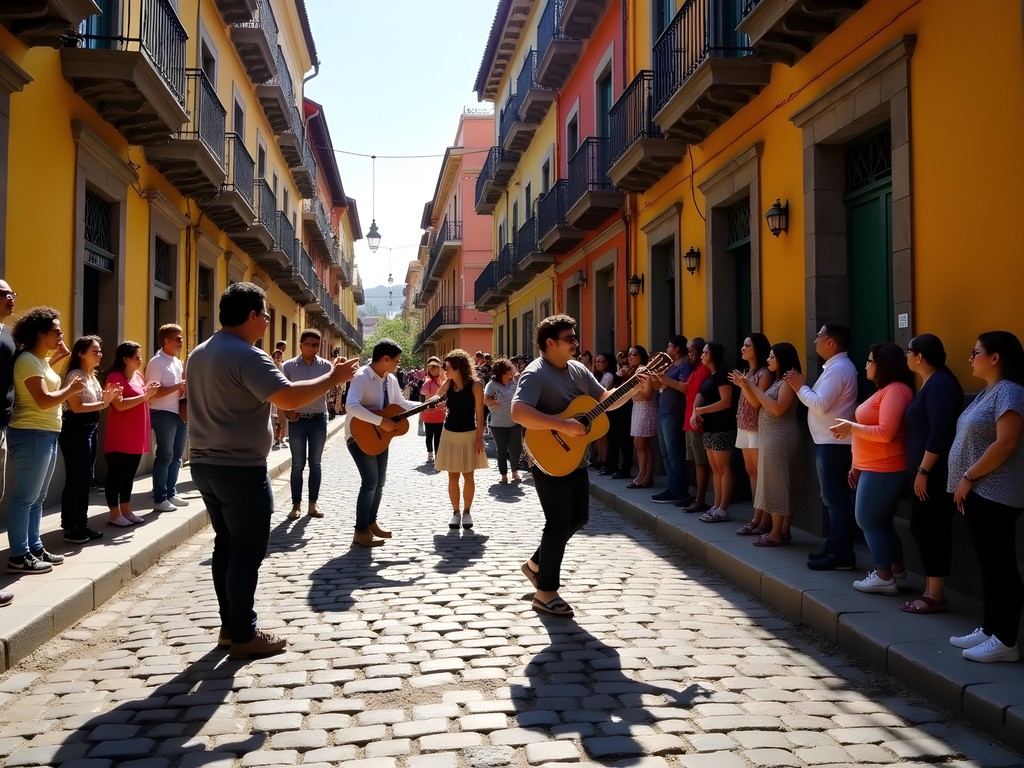
💡 Pro Tips
- Visit on weekends when the art markets and street performers create dynamic photography opportunities
- Look for the contrast between historic architecture and contemporary art installations for visual storytelling
- Return during evening blue hour when café lights create a magical atmosphere against the cobblestone streets
Parque Bicentenario: Urban Wildlife and Andean Backdrops
As both a veterinarian and photographer, Parque Bicentenario immediately called to my professional sensibilities. This modern 30-hectare urban park offers a remarkable blend of manicured landscapes, native Chilean flora, and unexpected wildlife encounters – all with the Andes mountains providing a dramatic backdrop that elevates every composition.
I arrived shortly after sunrise when the park was mostly populated by joggers and dog walkers, creating a peaceful atmosphere for photography. The park's eastern orientation means morning light illuminates the Andean peaks that frame the landscape, while the glass-like artificial lagoons create perfect reflection opportunities. These water features host several bird species including Chilean flamingos, which as a wildlife enthusiast, I couldn't resist photographing against the urban skyline – a powerful juxtaposition of nature within the metropolitan environment.
The park's design incorporates native Chilean plant species alongside international botanical collections, creating micro-landscapes that change with each section. Photographers interested in macro work will find endless subjects among the native flowering plants, particularly in autumn when seasonal blooms attract pollinators. I spent nearly an hour with my macro lens documenting these tiny ecosystems.
What makes Parque Bicentenario particularly special for photography is its thoughtful sightlines. Landscape architects have created numerous vantage points where the carefully manicured foreground elements frame either the Andes to the east or the modern Sanhattan (Santiago's financial district) skyline to the west. These built-in compositions make it easier for photographers of any skill level to capture postcard-worthy images.
For wildlife photographers, the early morning hours reveal surprising biodiversity. Beyond the flamingos, I spotted several endemic bird species and even documented an interaction between domestic dogs and the park's resident foxes – a fascinating glimpse into how wildlife adapts to urban environments. My background in veterinary science gave me patience to wait for these fleeting moments that many visitors miss.
Don't leave without visiting the park's northern section where a grove of ancient native trees creates a cathedral-like canopy – particularly photogenic when autumn light filters through the changing leaves, creating natural spotlights on the forest floor.

💡 Pro Tips
- Visit at sunrise for the best light on the Andes and to catch wildlife at their most active
- Bring a telephoto lens for the flamingos and other wildlife that maintain distance from the paths
- Explore the northern ancient tree grove in late afternoon when light filters through the canopy most dramatically
La Chascona: Neruda's Home and Artistic Inspiration
Nestled in the bohemian Bellavista neighborhood, La Chascona isn't just a museum dedicated to Nobel laureate Pablo Neruda – it's a photographer's study in creative expression through architecture and personal space. As someone fascinated by how environments shape their inhabitants (and vice versa), I found this house-museum offers unique photographic opportunities that connect visitors to Chile's artistic heritage.
The house's name – meaning "wild-haired woman" in Chilean Spanish – was Neruda's nickname for his third wife, Matilde Urrutia, and the property's whimsical design reflects both their love story and the poet's eccentric personality. Built to resemble a ship (Neruda was obsessed with maritime themes), the multi-level structure cascades down the hillside with unexpected angles and nautical elements throughout.
While interior photography is restricted in some areas, the gardens and exterior provide rich visual storytelling opportunities. I arrived mid-morning when the light filtered through the property's lush vegetation, creating dappled patterns across the colorful façade. The contrast between the home's bright blue and yellow exterior against the earthy tones of the surrounding hillside creates a naturally balanced color palette.
Photographically speaking, the most compelling feature is how the home frames views of Santiago below. Neruda intentionally positioned windows and balconies to capture specific city vistas – essentially creating his own viewfinders. These frames-within-frames offer photographers ready-made compositions that connect the intimate creative space to the broader urban landscape that inspired the poet.
The surrounding Bellavista neighborhood deserves exploration as well. After touring La Chascona, I wandered the nearby streets where vibrant street art and colonial architecture create a visual dialogue between Chile's past and present artistic expressions. The area's hillside location means you'll find numerous elevated perspectives of the city that aren't in typical tourist guidebooks.
For those interested in architectural details, the house features fascinating elements like porthole windows, sloping ceilings, and custom-built furniture that tell the story of Neruda's creative mind. These intimate details photograph beautifully in the soft natural light that permeates the space, creating a visual narrative of one of Latin America's most celebrated literary figures.
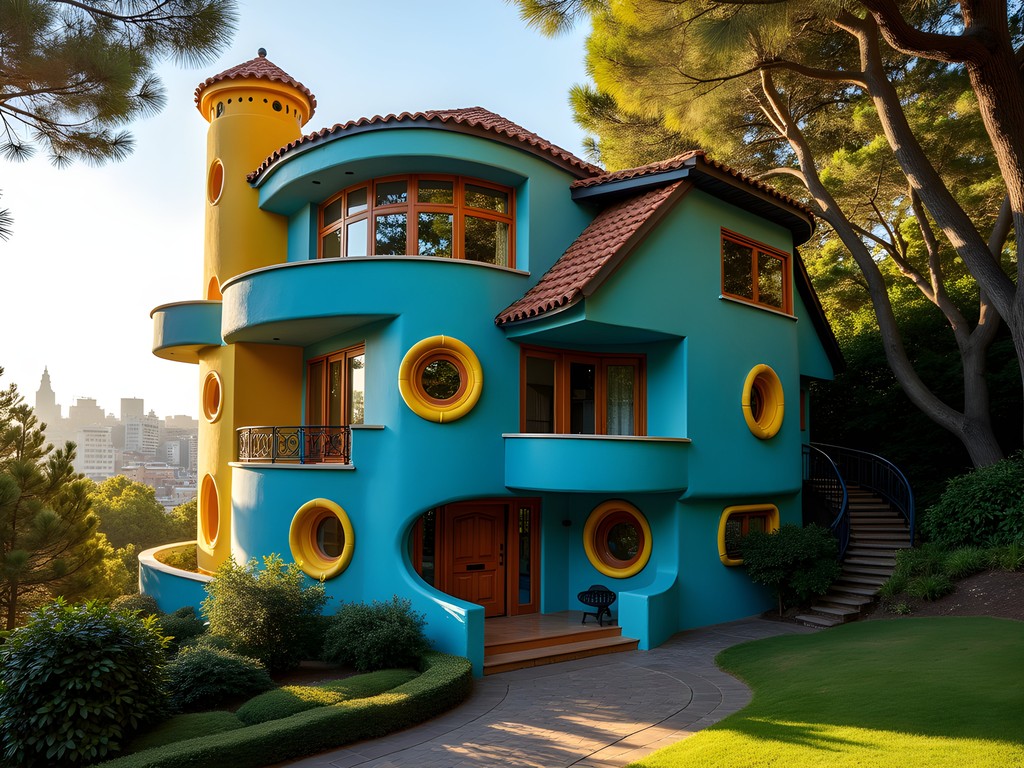
💡 Pro Tips
- Visit mid-morning when light filters through the garden vegetation most dramatically
- Look for the intentional 'frames' Neruda created through windows and architectural elements
- Explore the surrounding Bellavista neighborhood for additional photographic opportunities after your visit
Cerro Santa Lucía: Historical Elegance on a Granite Outcrop
Rising dramatically from central Santiago, Cerro Santa Lucía presents one of the city's most photogenic combinations of natural landscape and historical architecture. This small hill – really a granite outcrop adorned with elegant 19th-century terraces, fountains and stairways – offers photographers a romantic vision of Santiago's past against its modern present.
I arrived about two hours before sunset when the western light bathes the yellowstone facades in a warm glow that enhances the hill's fairy-tale quality. The Neptune Fountain near the main entrance creates an impressive foreground element with the city skyline visible beyond – a perfect juxtaposition of classical and contemporary Santiago. The fountain's water droplets catch the afternoon light, creating natural sparkle effects that add magic to images.
As you ascend the ornate stairways, each terrace reveals new photographic possibilities. The Terraza Neptuno offers intimate garden scenes with classical statuary, while higher viewpoints provide increasingly expansive city panoramas. What fascinated me most was how the carefully positioned terraces frame specific city views – the 19th-century architects essentially created pre-composed photographs for today's visitors.
The hill's crown jewel is the neoclassical Castillo Hidalgo, whose stone walls glow amber in late afternoon light. Position yourself on the eastern side of this structure before sunset to capture how the building's elegant lines contrast with the modern glass towers of Santiago's financial district beyond.
Unlike more remote viewpoints, Cerro Santa Lucía's central location means city sounds become part of the experience. Rather than considering this a distraction, I incorporated this urban energy into my photography by including human elements – couples on the romantic terraces, artists sketching the views, and families enjoying the gardens all add authenticity to images of this very lived-in historical space.
For technical considerations, the hill's varied lighting conditions challenged my camera's dynamic range, particularly when shooting from shadow into bright city views. My neutral density filter proved invaluable for balancing exposure between foreground architectural details and the broader cityscape beyond.
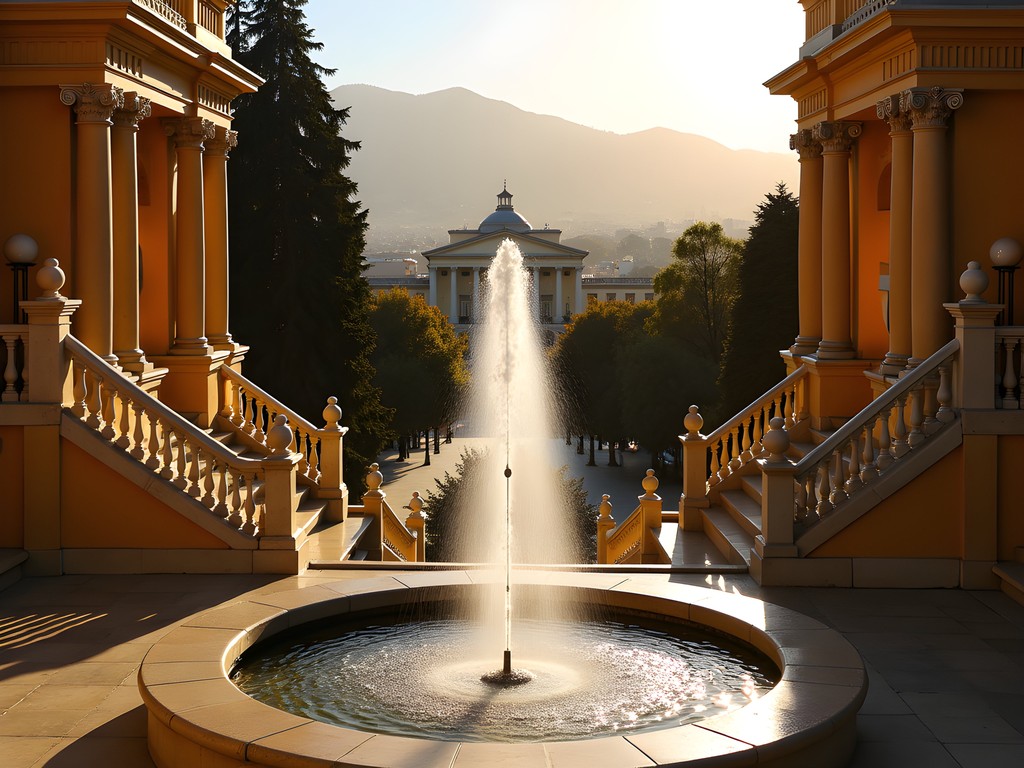
💡 Pro Tips
- Visit 2-3 hours before sunset when warm light enhances the yellowstone facades
- Bring a neutral density filter to balance exposure between shadowed terraces and bright city views
- Explore beyond the main paths – some of the most photogenic corners are found on lesser-used stairways and terraces
Museo Precolombino: Capturing Cultural Artifacts and Lighting Mastery
While outdoor locations dominate most Santiago photography guides, the Chilean Museum of Pre-Columbian Art (Museo Chileno de Arte Precolombino) offers interior photography opportunities that rival any landscape. Housed in a meticulously restored colonial building, this museum combines architectural elegance with dramatic exhibition lighting that transforms cultural artifacts into photographic subjects of exceptional beauty.
As someone with a scientific background, I appreciate how thoughtful museum curation enhances photography. Here, curators have created lighting conditions that photographers would design themselves – directional spotlighting that accentuates the textural details of ancient ceramics, textiles, and stonework while maintaining a reverent atmosphere through controlled ambient light.
The central courtyard provides a stunning architectural frame with its arched colonial corridors surrounding an open-air space. Visit mid-day when sunlight creates geometric patterns across the courtyard floor while the surrounding galleries remain in shadow – this contrast creates natural leading lines drawing viewers into your compositions. I spent nearly an hour just photographing how light moved across this space, creating constantly evolving patterns.
The museum's indigenous textile collection particularly captivated my lens. The exhibition designers have illuminated these delicate fabrics to highlight their intricate weaving patterns while protecting them from damaging light exposure – a technical achievement that photographers can appreciate. The resulting images reveal craftsmanship details nearly impossible to capture in conventional lighting.
While many museums restrict photography, Museo Precolombino allows non-flash photography throughout most exhibitions (always confirm current policies). Their enlightened approach recognizes how photography helps visitors connect with cultural heritage. I found the staff exceptionally accommodating when I explained my interest in documenting traditional craftsmanship techniques.
For those interested in technical aspects, the museum's controlled lighting environment makes it an excellent place to practice manual exposure and white balance skills. The dramatic spotlighting creates higher contrast ratios than typical indoor settings, allowing for creative shadow play in your compositions. I found setting my camera to slightly underexpose (-0.7 EV) preserved the atmospheric quality while maintaining detail in highlighted artifacts.
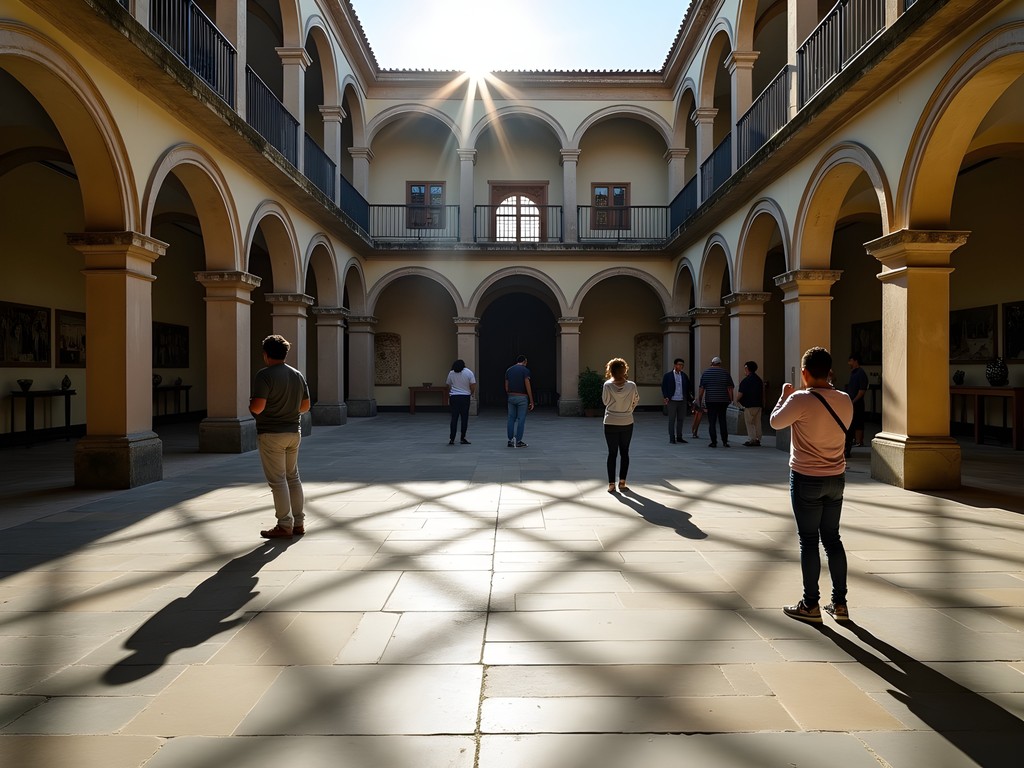
💡 Pro Tips
- Visit the central courtyard at midday when sunlight creates geometric patterns across the floor
- Set your white balance manually rather than auto – the museum's specialized lighting has intentional color temperatures
- Look for compositions where ancient artifacts are juxtaposed against colonial architecture for visual storytelling
Barrio Italia: Vintage Charm and Urban Renewal Through the Lens
In a city racing toward modernity, Barrio Italia stands as Santiago's love letter to its own past – a neighborhood where vintage shops, artisanal workshops and industrial heritage create a photographer's playground of textures, colors and authentic moments. Located just south of Providencia, this once-overlooked district has transformed into a creative haven while maintaining its architectural character.
What immediately struck me was how the neighborhood's low-rise profile allows soft natural light to penetrate its narrow streets, illuminating weathered façades in ways that reveal decades of urban stories. I visited on a quiet Thursday morning when shopkeepers were arranging window displays and artisans were beginning their day's work – these unguarded moments of creative process make for compelling environmental portraits.
The district's heart is Calle Italia, where renovated industrial buildings now house design studios, antique shops, and specialty cafés. The juxtaposition of original industrial elements (exposed beams, factory windows) with contemporary artistic interventions creates fascinating textural contrasts. Look for the interior passages and courtyards where former factories have been subdivided into creative workshops – these hidden spaces offer intimate glimpses into Santiago's maker culture.
For photographers interested in architectural details, Barrio Italia presents a study in adaptive reuse. Original early 20th-century façades remain intact while interiors have been thoughtfully modernized. This layering of time periods creates natural framing opportunities where old archways reveal contemporary creative spaces beyond. I found shooting from the street into these transitional spaces told the neighborhood's story of evolution most effectively.
The district's vintage furniture restoration workshops proved particularly photogenic. Many artisans welcome respectful photography of their craft, creating opportunities to document traditional woodworking and upholstery techniques. As someone fascinated by the intersection of traditional craftsmanship and contemporary design, I spent hours documenting these processes that connect Santiago's past to its creative present.
As afternoon approached, the neighborhood's numerous cafés filled with a mix of creative professionals, students, and visitors. These spaces – many featuring upcycled furniture and industrial artifacts as decor – offer rich environmental storytelling opportunities. The quality of natural light filtering through original factory windows creates a cinematic atmosphere that elevates even simple café scenes.
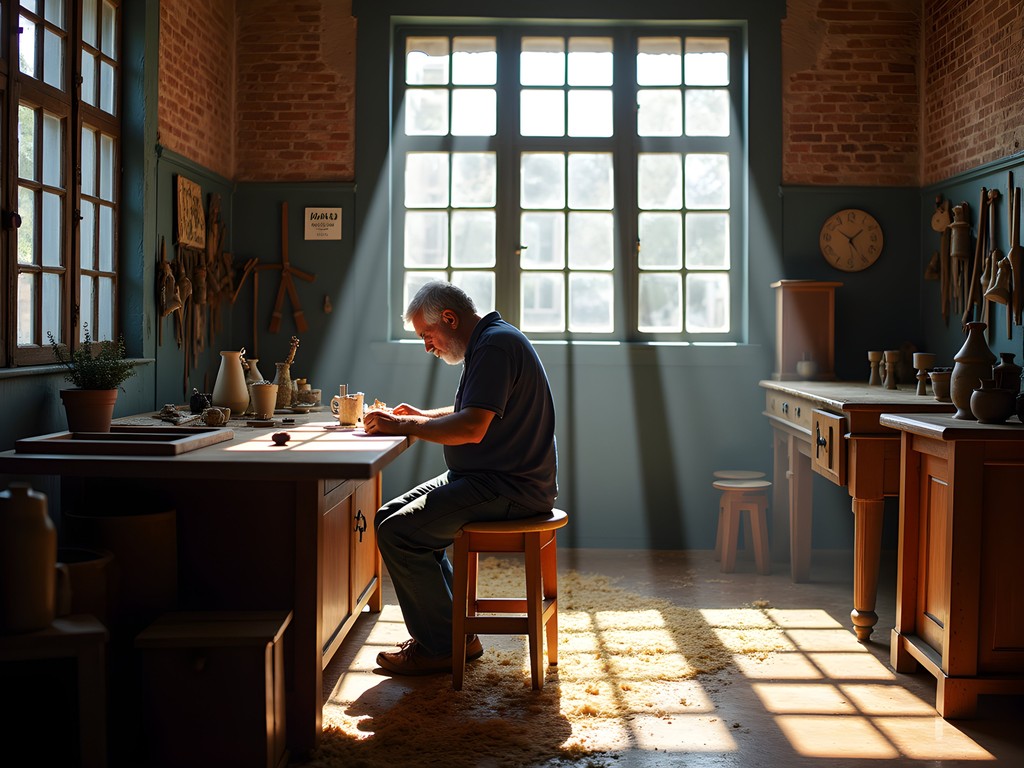
💡 Pro Tips
- Visit on weekday mornings to photograph artisans and shopkeepers preparing for the day
- Look beyond the main streets – the most photogenic workshops and studios are often found in interior courtyards
- The neighborhood comes alive with creative energy in late afternoons – schedule time for both morning architectural photography and afternoon people-watching
Final Thoughts
As I packed away my camera on my final evening in Santiago, scrolling through hundreds of images capturing everything from flamingos against Andean backdrops to centuries-old craftsmanship in hidden workshops, I realized how thoroughly this city had shattered my preconceptions. Santiago isn't merely a gateway to Patagonia or the Atacama Desert – it's a photographic destination worthy of dedicated exploration, where natural grandeur meets cultural richness through a uniquely Chilean lens. What makes photography in Santiago so rewarding isn't just the diversity of subjects but how the quality of light transforms throughout the day, from the golden Andean glow at sunrise to the dramatic urban illumination after dark. Whether you're wielding professional gear or simply your smartphone, these ten locations offer endless creative possibilities while revealing the multifaceted soul of Chile's capital. As you plan your own Santiago photography journey, remember that the most compelling images often emerge when you allow yourself to wander beyond the viewpoints, connecting with local stories that transform beautiful pictures into meaningful visual narratives.
✨ Key Takeaways
- Santiago offers exceptional diversity for photographers – from Andean panoramas to intimate cultural documentation
- The quality of light in Santiago is distinctive, with mountains creating dramatic backdrops and reflections
- Many of the best photo opportunities emerge through cultural connections and conversations with locals
- Plan your photography around the golden hours, but don't miss blue hour when the city transforms against the mountain silhouettes
📋 Practical Information
Best Time to Visit
March-May (fall) for clear mountain views and comfortable temperatures
Budget Estimate
$40-60 USD per day excluding accommodation
Recommended Duration
3-4 days minimum to cover these photography locations
Difficulty Level
Intermediate - Involves Some Hillside Locations And Varying Lighting Conditions

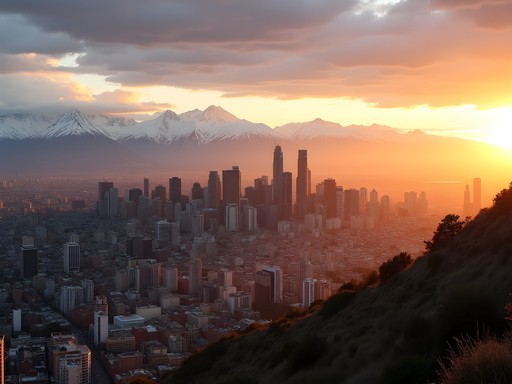
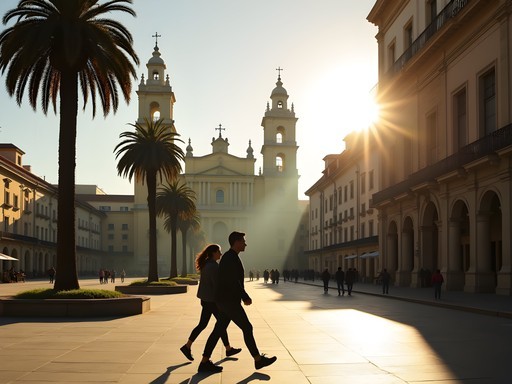
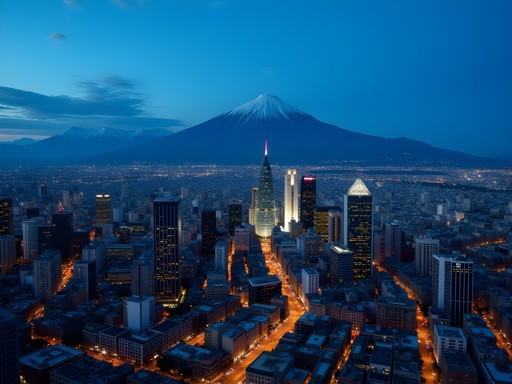
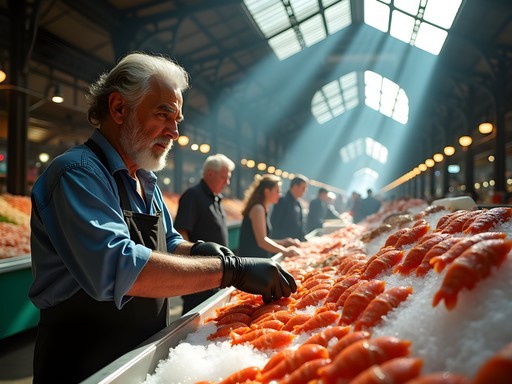
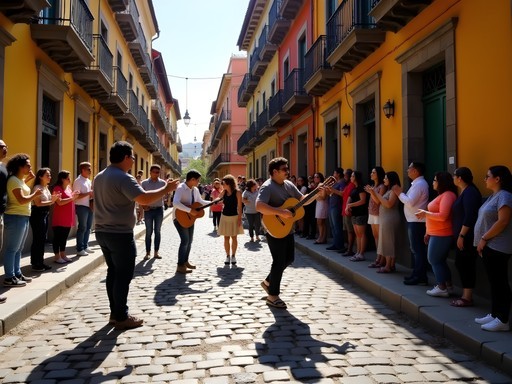
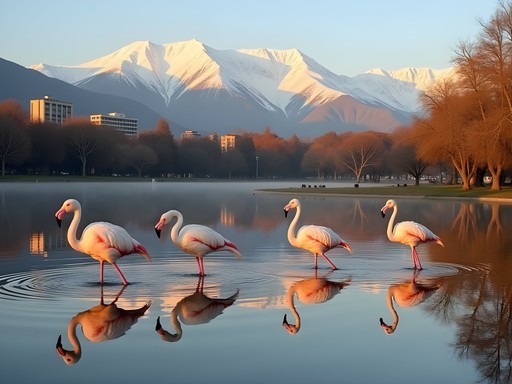


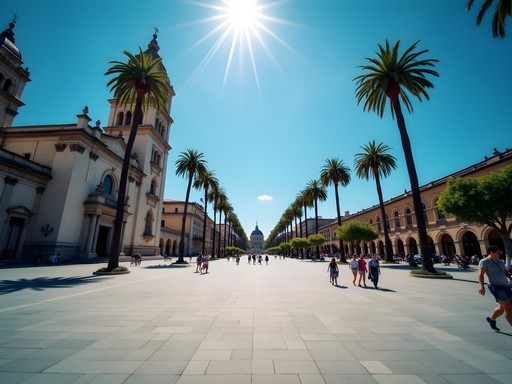


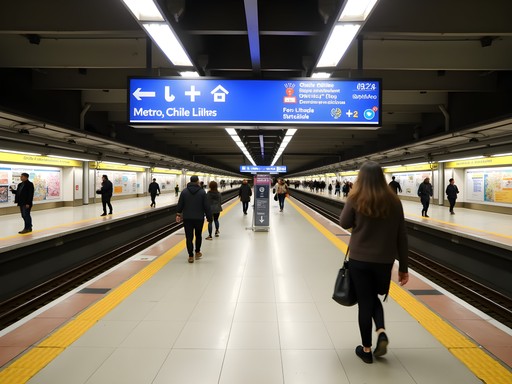
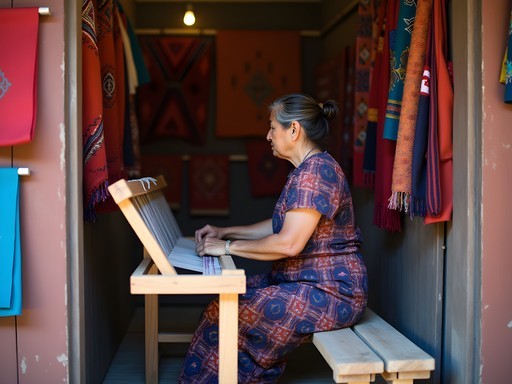
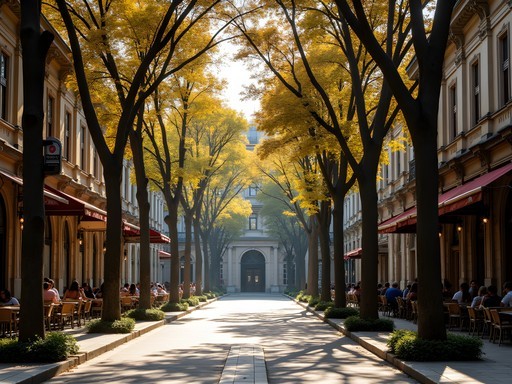
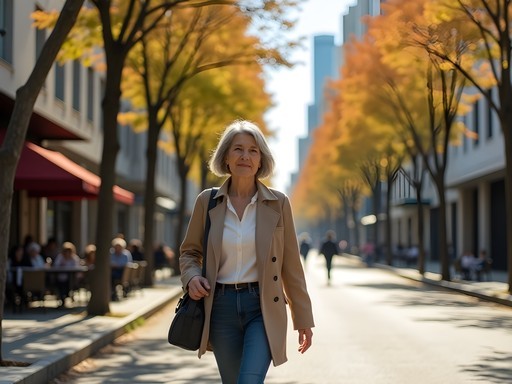
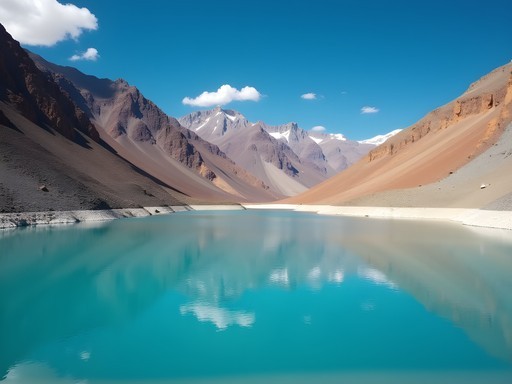
Comments
Fatima Sims
Casey, your post captures exactly what makes Santiago such a photogenic city! When I visited last spring, I discovered that timing is everything - the light hits differently across the city throughout the day. For anyone planning a trip: Cerro San Cristóbal is magical at sunrise, Plaza de Armas comes alive mid-morning when the light filters between buildings, and Sky Costanera is unbeatable at sunset when the Andes glow pink. I'd also recommend Parque Bicentenario for wildlife photography - those flamingos against the city backdrop create a surreal juxtaposition. The park guards told me morning visits (8-10am) offer the best chance to catch the birds active and feeding. Can't wait to return and explore more of your recommended spots!
vacationbackpacker4118
Just booked tickets to Santiago for January! Can't wait to check out these spots!
beachmood
You're going to love it! Don't miss the empanadas at Mercado Central - perfect snack while taking photos!
Marco Flores
Casey, your captures of Santiago brought back so many memories! I spent three weeks there last year documenting the contrast between the historic and modern architecture. One spot I'd add to your excellent list is Barrio Italia - those narrow streets with colorful buildings make for incredible framing opportunities, especially in late afternoon when shadows get dramatic. Sky Costanera was a game-changer for my cityscape portfolio too, though I'd recommend visitors bring a microfiber cloth for the windows - those fingerprints can ruin an otherwise perfect shot! I used my travel tripod for the night shots from there and it was compact enough to carry all day without complaints from security.
coollife
Don't miss the street art in Bellavista neighborhood! Some of the murals are absolutely massive and make for killer Instagram shots. We spent an entire afternoon just wandering those streets. The colors pop best around 4pm when the harsh midday light softens up. Also found this tiny coffee shop called Café del Poeta where you can get rooftop access if you ask nicely - perfect view of the bohemian neighborhood with the mountains in the background.
citywanderer
Café del Poeta was closed when I visited! So bummed I missed that rooftop view.
escapezone
Great post! How did you get around to all these spots? Public transport or did you rent a car?
roamone
Not the author but I was in Santiago last year and their metro system is amazing for hitting most of these spots! Super clean and efficient.
Casey Torres
Roamone is right - I used the metro for almost everything! It's cheap and connects to most of these spots. For Cerro San Cristóbal, I took the funicular up which was an experience in itself. Only used Uber a couple times late at night.
adventurezone
These photos are INSANE! Adding Santiago to my bucket list right now!
beachmood
Just got back from Santiago last week and your photos are spot on! That morning light at Cerro San Cristóbal was absolutely magical - totally worth the early wake-up call. We went around 7am and had the place practically to ourselves. The contrast between the urban landscape and those snow-capped Andes in the background is something I'll never forget. Did you try any of the local cafés near Bellavista? Found some amazing spots for post-photography coffee breaks!
Casey Torres
Thanks beachmood! 7am is definitely the sweet spot for Cerro San Cristóbal. I loved Café Cultura in Bellavista - their cortados and view of the street art made for perfect post-hike recovery!
Sophia Gomez
Casey, your photos capture Santiago's spirit beautifully! I was there on assignment last year and discovered a hidden gem not on your list - Barrio Italia in the afternoon when the light filters through those old workshops-turned-cafes. The antique shops create the most interesting compositions. For anyone planning a photo trip to Santiago, I'd add that the smog can affect visibility, so check air quality forecasts. After rain is magical! Also, the Parque Bicentenario has these stunning flamingos against the city backdrop that make for incredible contrast shots. The park guards are used to photographers and super accommodating if you're respectful.
sunnystar8937
Heading to Santiago in November! Is it worth bringing my big DSLR or will my phone camera be enough for these spots? Also, how safe did you feel carrying camera gear around?
Sophia Gomez
I brought my mirrorless camera and felt it was perfect for Santiago. Phone cameras are great these days, but for those Andean panoramas and low-light market shots, you'll appreciate having something more robust. Safety-wise, I felt comfortable in most tourist areas during daylight hours, but used a non-descript camera bag and stayed aware of my surroundings. The telephoto lens was essential for those cityscape shots from Cerro San Cristóbal!
sunnystar8937
Thanks Sophia! Definitely bringing my camera then. Can't wait to capture those mountain backdrops!
escapebackpacker
Those Plaza de Armas shots are incredible! Adding Santiago to my bucket list right now.
Venture X
Premium card with 2X miles, $300 travel credit, Priority Pass